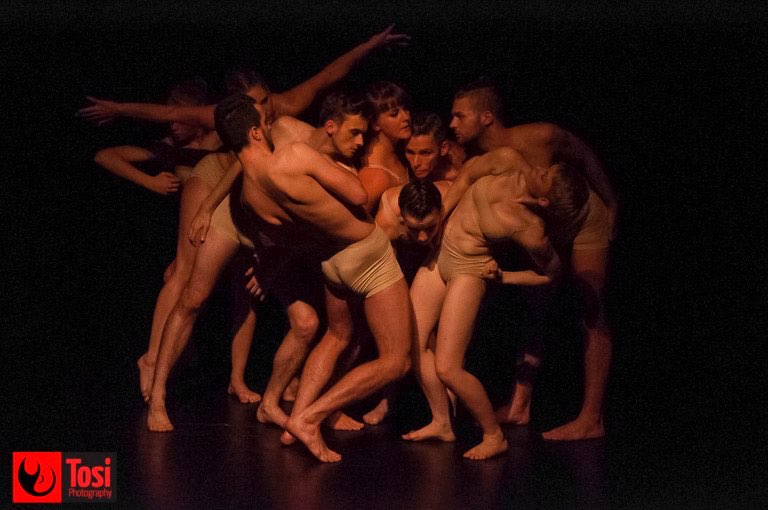Words by Katie Hagan. Performed at Trinity Laban.
A culmination of years’ research on Rudolf Laban, notation and choreology, Ali Curtis-Jones’ Drumstick performed by her company of lithe dancers, Summit Dance Theatre, is a technical masterpiece which injects new leases of life into the canonical choreographer’s lost performances.
Representing a ‘living archive’ of Laban’s work, Drumstick is an ode to the dance master’s legacy and indeed his groundbreaking understandings of what, why and how the human body moves.
It’s a dark stage. Smoke pervades the space like dust that won’t settle. The dancers begin to twitch, to corkscrew the balls of their feet into the floor, to flick different body parts. As the momentum builds to reach a crescendo, they exhale deeply, filling the stage with sighs. As with waves that fall to the shore only to start the process once more, the dancers continue their incremental moving, before breaking out into a group piece.
The stage is still dimly lit, as if someone in the wings has left a door cracked open. The group piece is a fuller embodiment of the nimble, electric isolations in the first movement phase. Percussion music played by Oli Newman and Ronen Kozokaro, is made in response to the movement, creating a blissful synergy and sustaining Drumstick’s energy. Everything is created in this moment, and as an audience it is delightful. Then in dance’s true elusive fashion, Drumstick’s dancers jump into darkness, the movement never to be performed like this again.

Summit Dance Theatre reappear after the interval to perform the second and final piece, Nacht, which transports us to the post war, depressed Weimar Republic. The dancers are dressed in top hat and tails or glitzy sequin flapper dresses, and dance merrily to jazz music. The perfect masquerade, this false splendour masks a plethora of issues connected with the Weimar. It was a time of paradox and contradiction; where citizens lived for the day as a loaf of bread would put you back a million marks. It is a busy stage, Curtis-Jones’ choreography encapsulates the sound and smell of decadence; bawdy movement is met with laughs from the audience.
In its final guise, Nacht moves into what seems to be a more military scene, with dancers marching around the stage, chanting military idioms. The parallel of two scenes – of disorder and order – emphasises the fact the Weimar era preceded Nazism and was, among other factors, a gateway to Hitler’s fascism. Movement is uniform, bodies are bent double, fists are clenched; Nacht in all its darkness is a living archive of a moment in time which changed the course of modern history.
Header image: Kyle Stevenson.
